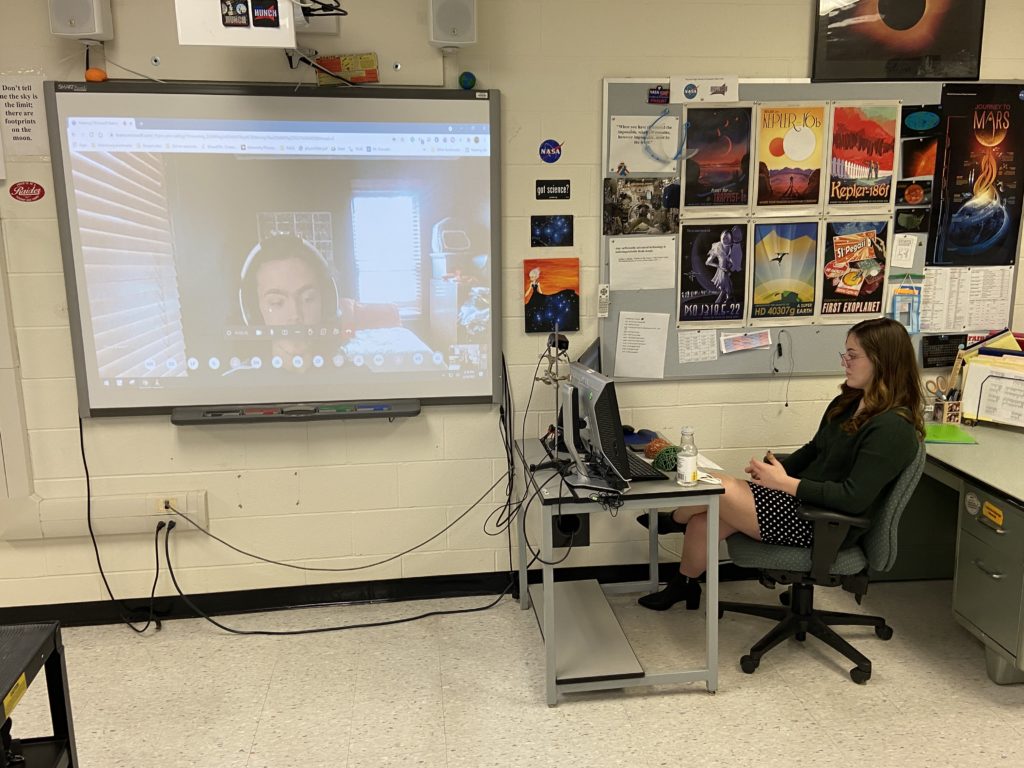Lead image caption: FHS students John DeWaters (on screen) and Kayla Maxwell present to NASA scientists
Fairport High School (FHS) students have reached new heights with their engineering and planning skills, as they presented plans to NASA scientists for a “lunar supply pod” that would help re-provision future moon missions. FHS students John DeWaters and Kayla Maxwell presented their lunar supply pod plans from FHS this week. The presentation is one of the final steps in the NASA HUNCH program.
NASA HUNCH calls on high school students across the country to apply their skills to a variety of challenges and projects put forward by NASA. The student teams collaborate on the projects to come up with solutions. FHS Physics Teacher Vincenzo Stornello is one of two HUNCH advisors, along with FHS Chemistry Teacher Donna Himmelberg.
Stornello says the STEAM-based elective class attracts students with all levels of science and technology proficiency, and is so popular that some students elect to take it more than once. “The kids rise to the occasion…before they know it, they’re headlong into the work,” said Stornello.
Stornello says three FHS team projects were selected for this year’s semi-final round, and DeWaters and Maxwell’s lunar supply pod was chosen as a national finalist this year. Stornello says the students were challenged to figure out the best design for a supply pod that could be packed with items, then land on the moon without any engine. Maxwell and DeWaters used a 3-D printer to model their textured spherical pod design, and used a video game as a simulator for their lunar landing.
The NASA HUNCH project-based learning program has been offered at FHS for many years. The students’ goal is to have their project selected for presentation to NASA and eventual production for use in future missions. Stornello says elements of two past Fairport projects (non-slip footwear for astronauts and a hygiene caddy) are already in production and used on the International Space Station, and elements of another FHS project (a wand that disinfects with UV light) are in final testing.
Normally, the top teams would travel to Houston to present their plans in-person, but as a pandemic precaution, the FHS team and teams across the nation presented virtually to a panel of experts. The NASA presentations are thorough.
DeWaters and Maxwell presented to scientists located at space centers across the country. The NASA representatives were impressed with the FHS team’s hacking of a space simulator game to model their pod’s approach to the lunar surface.
“We went through a bunch of ideas and tests and being able to receive that positive response from our advisors and the board of engineers was truly rewarding,” said Maxwell after the presentation.
Stornello encourages any students who are interested in NASA or space to take the HUNCH class.

